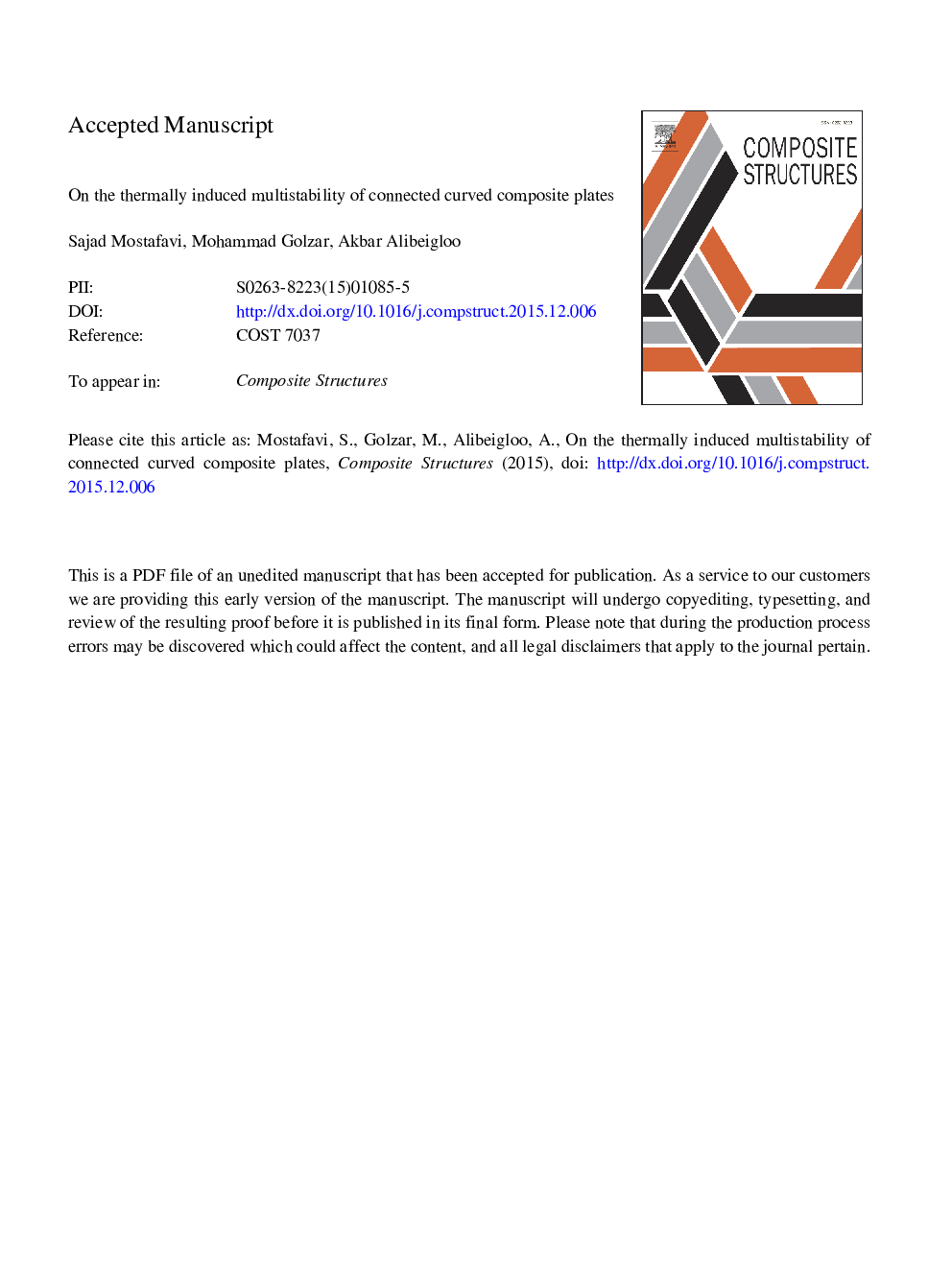| Article ID | Journal | Published Year | Pages | File Type |
|---|---|---|---|---|
| 6706233 | Composite Structures | 2016 | 25 Pages |
Abstract
So far thermally induced bistable flat plates and shells have been studied separately. Combination of these elements together introduces a new set of bistable structures. This paper presents a Rayleigh-Ritz model to study the thermal deformation of connected curved plates. In this work, the initially curved plate model (Eckstein et al., 2014) is extended to account for the continuity of displacements and strains on the connection line. The model is compared with experimental data and finite element for two and three connected curved plate geometries. Effect of different layups other than [0/90] can be examined by this model. As an example, a [â45/45] layup is studied. The accuracy of the presented model is good away from the boundaries but inaccuracies occur close to the edges, i.e. giving reasonable accuracy overall. As a new result, combining different layups and initial curvatures can lead into more than two stable configurations. Compared to previous analytical models which are focused on single flat or curved plates, in this work a more general model is developed that can take into account various initial shapes. Finally, the combined effect of initial shape and temperature variation on the existence of bistability is demonstrated.
Keywords
Related Topics
Physical Sciences and Engineering
Engineering
Civil and Structural Engineering
Authors
Sajad Mostafavi, Mohammad Golzar, Akbar Alibeigloo,
